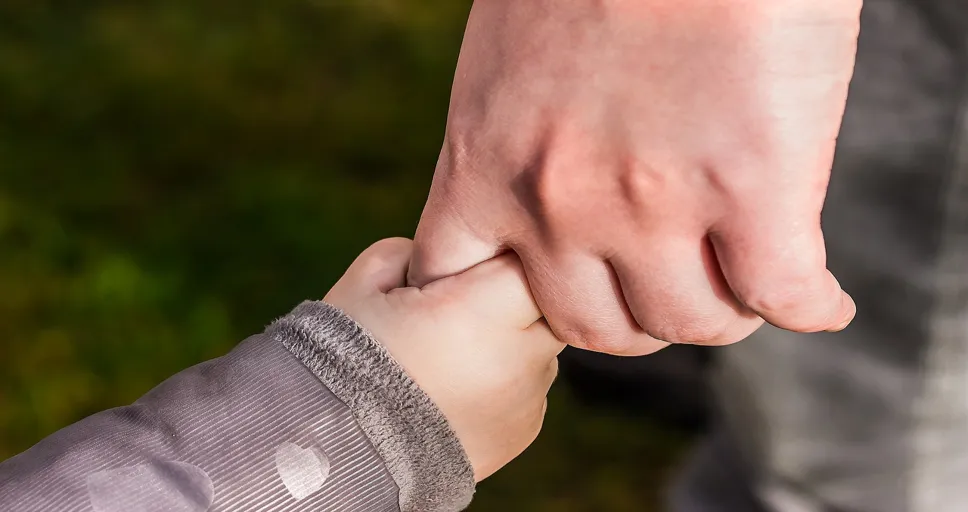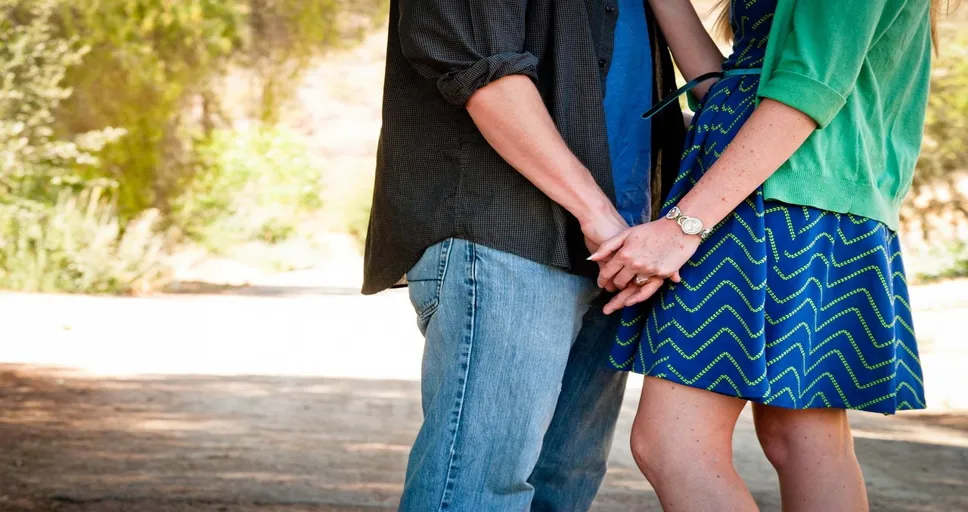Contents
- 1 Do Guys Like Clingy Girls? The Male Perspective on Clingy Girls
- 2 Balancing Attention and Space
- 3 Clinginess vs. Healthy Attachment
- 4 Communication and Boundaries
- 5 Individual Preferences and Differences
- 6 The Impact of Clinginess on Long-term Relationships
- 7 Navigating Clinginess: Tips and Strategies
- 8 Concluding Thoughts on Clinginess and Attraction
- 9 Recommended Authors For Further Reading
Understanding the concept of clinginess in relationships is crucial when addressing the question, “do guys like clingy girls?” This query often surfaces in discussions about relationship dynamics, particularly in the early stages of dating. Clinginess, commonly understood as a need for constant attention and affirmation, can manifest differently in various relationships. It’s important to recognize that what might be considered clingy in one relationship could be viewed as normal affectionate behavior in another.
At the heart of understanding clinginess is the recognition of its roots. Often, clinginess stems from underlying feelings of insecurity or fear of abandonment. These emotions can drive an individual to seek continuous reassurance from their partner, leading to behaviors that might be perceived as overly needy or dependent. It’s essential to differentiate between a healthy desire for closeness and an unhealthy dependence that stifles both partners’ individuality and personal growth.
In exploring clinginess, it’s also necessary to consider cultural and personal differences. What one culture or individual might label as clingy, another might see as a desirable level of intimacy and care. Hence, it’s not just about a one-size-fits-all answer to “do guys like clingy girls?” but more about understanding the nuances and individual preferences that shape how clinginess is perceived and experienced in a relationship.
- Clinginess varies by relationship; it’s seen differently in different contexts.
- Roots of clinginess often lie in insecurity or fear of abandonment.
- Cultural and personal differences influence perceptions of clinginess.
- Men’s views on clinginess vary: some find it endearing, others overwhelming.
- Communication is key in understanding and managing clinginess.
- Balancing attention and space is crucial for a healthy relationship.
- Personal space allows for individual growth, while attention shows care.
- Effective communication bridges needs for space and attention.
- Recognize and respect individual differences in need for space or attention.
- Use practical strategies like scheduled alone time, quality time together, open communication, respecting boundaries, and mutual understanding.
Do Guys Like Clingy Girls? The Male Perspective on Clingy Girls
When it comes to relationships, one question that often surfaces is, do guys like clingy girls? This query is not just about a simple yes or no answer; it delves into the complexities of male preferences and how they perceive clinginess in a relationship. To understand this perspective, it is essential to explore the various aspects that influence men’s attitudes towards clinginess.
The Definition of Clinginess from a Male Point of View
Firstly, it is important to define what ‘clinginess’ means in the context of a relationship from a male perspective. Generally, men may interpret clinginess as a partner’s need for constant attention, affirmation, and reassurance. This could manifest as frequent messages, calls, or a desire to spend a significant amount of time together. While some men might appreciate this level of attention as a sign of love and commitment, others may perceive it as overbearing or suffocating.
Individual Preferences and Personalities
The response to clinginess largely depends on individual preferences and personalities. Some men might find clingy behavior endearing and reassuring; it makes them feel needed and important in their partner’s life. This is particularly true for those who value close and constant connection in their relationships. On the other hand, men who cherish independence and personal space might view clinginess as a negative trait. They might feel overwhelmed by the constant need for interaction, viewing it as a limitation to their freedom and individuality.
The Role of Communication and Understanding
Effective communication plays a crucial role in how men perceive clinginess. If a man understands the reasons behind his partner’s clingy behavior, such as past insecurities or fear of abandonment, he might be more empathetic and accommodating. Understanding each other’s needs and boundaries can transform clinginess from a potential issue into a point of growth for both partners. Through open and honest communication, couples can find a balance that satisfies both their needs for closeness and independence.
Cultural and Societal Influences
Cultural and societal norms also impact how clinginess is perceived. In some cultures, what is considered clingy in one society might be seen as normal or even expected in another. Men’s attitudes towards clingy behavior can be influenced by their cultural background, societal expectations, and the relationship models they have observed around them.
Conclusion
In conclusion, the answer to “do guys like clingy girls” is not straightforward. It varies from person to person and depends on numerous factors, including individual preferences, communication styles, and cultural influences. While some men may appreciate a partner who is visibly and consistently affectionate, others might prefer a relationship where both partners maintain a level of independence. Ultimately, the key lies in understanding and respecting each other’s boundaries and finding a balance that works for both individuals in the relationship.
Balancing Attention and Space
In exploring the nuances of relationship dynamics, especially when considering the question, do guys like clingy girls, it’s essential to understand the importance of balancing attention and space. This balance is crucial in fostering a healthy, fulfilling relationship where both partners feel valued and respected.
Understanding the Need for Personal Space
Personal space in a relationship is as vital as shared moments. It allows individuals to maintain their identity, pursue their interests, and recharge, contributing to their overall well-being. While some degree of clinginess can be flattering, it’s important to recognize when it crosses the line into encroaching on personal space. Respecting each other’s need for alone time is a key aspect of a healthy relationship. This does not imply a lack of love or affection; rather, it’s an acknowledgment of each person’s individuality.
The Art of Giving Attention
On the flip side, giving attention is a way to show care and commitment in a relationship. It involves actively listening, showing empathy, and being present during the time spent together. The challenge lies in ensuring that this attention does not become overbearing. The question, “do guys like clingy girls,” often stems from a misunderstanding of what constitutes healthy attention. It’s about quality over quantity, where the focus is on meaningful interaction rather than constant presence.
Communication: The Bridge Between Attention and Space
Effective communication is the bridge that connects the need for personal space with the desire for attention. It involves openly discussing each other’s needs, expectations, and boundaries. By communicating, partners can avoid misunderstandings and find a balance that works for both. It’s important to have regular check-ins to ensure that both partners are comfortable with the level of attention and space in the relationship.
Recognizing and Respecting Differences
Every individual is unique, and what works for one couple might not work for another. Some people may require more space, while others might crave more attention. Recognizing and respecting these differences is crucial. It’s about finding a middle ground where both partners feel their needs are being met. This often requires compromise and adjustment as the relationship evolves.
Practical Strategies for Balancing Attention and Space
- Scheduled Alone Time: Allocate specific times for personal activities or solitude. This ensures that both partners have the opportunity to pursue their interests independently.
- Quality Time Together: Plan meaningful activities together that strengthen the relationship. This could range from date nights to engaging in a shared hobby.
- Open Communication: Regularly discuss how you both feel about the amount of time spent together and apart. Be honest and open to feedback.
- Respect Boundaries: Understand and respect each other’s boundaries. If one partner needs more space, it should be granted without resentment.
- Mutual Understanding: Acknowledge that needing space is not a reflection of the love and commitment in the relationship. It’s a natural part of maintaining a healthy individual and joint
existence.
Finding the Right Balance
In conclusion, balancing attention and space in a relationship is a delicate act that requires understanding, communication, and respect. It’s about ensuring that both partners feel loved and valued without feeling overwhelmed or neglected. This balance is different for every couple and may change over time as the relationship grows and evolves. Ultimately, the goal is to create a harmonious relationship where both partners feel fulfilled both together and as individuals. By mastering this balance, the query “do guys like clingy girls” becomes less about clinginess and more about mutual respect and understanding in a healthy, loving relationship.
Clinginess vs. Healthy Attachment

In the realm of romantic relationships, distinguishing between clinginess and healthy attachment is vital, especially when considering the perspective of men on the matter. The question, “do guys like clingy girls,” often arises from a misunderstanding of these two concepts. Understanding their differences can illuminate why certain behaviors are perceived as either endearing or suffocating in relationships.
Defining Clinginess in Relationships
Clinginess, often characterized by a need for constant attention and reassurance, can stem from insecurities and a fear of abandonment. It manifests in behaviors such as excessive texting, wanting to spend every moment together, and a reluctance to allow the partner personal space. Clingy behavior often results in one partner feeling suffocated, as their need for individuality and independence is not respected. This is where the question “do guys like clingy girls” becomes particularly relevant, as it challenges the notion of personal space and independence in a relationship.
Characteristics of Healthy Attachment
On the other hand, healthy attachment in a relationship is about feeling connected and secure without being overly dependent. It’s a mutual bond where both partners encourage each other’s growth, respect personal space, and foster trust. Healthy attachment involves:
- Mutual Respect: Both partners respect each other’s need for individuality and personal space.
- Effective Communication: There is open and honest communication about needs and boundaries.
- Trust and Security: Each partner feels secure in the relationship, without the constant need for reassurance.
- Supporting Individual Interests: Encouraging each other to pursue personal interests and hobbies.
The Thin Line Between Clinginess and Healthy Attachment
The line between clinginess and healthy attachment can sometimes be thin and blurred. It is often a matter of perception and personal preferences. What one person sees as a healthy need for closeness, another might perceive as clinginess. This is why the question of “do guys like clingy girls” cannot be answered universally, as it varies greatly depending on individual expectations and relationship dynamics.
To navigate between clinginess and healthy attachment, it is crucial to:
- Understand Each Other’s Love Languages: Understanding how each partner expresses and receives love can help in recognizing the difference between clinginess and healthy attachment.
- Establish Clear Boundaries: Discuss and agree on boundaries regarding time spent together and apart.
- Foster Trust: Build a foundation of trust where both partners feel secure, reducing the need for clingy behaviors.
- Maintain Individuality: Encourage and support each other
in maintaining individual interests and friendships outside the relationship. This helps in retaining a sense of self which is crucial for a healthy attachment.
Conclusion
In conclusion, understanding the difference between clinginess and healthy attachment is key to answering the question, “do guys like clingy girls.” While preferences vary among individuals, it’s generally accepted that a healthy attachment, characterized by trust, respect, and individuality, forms the foundation of a strong and fulfilling relationship. It’s essential for partners to communicate openly and understand each other’s needs to ensure that their attachment is healthy and supportive, rather than clingy and stifling. By doing so, relationships can thrive on mutual respect and love, where both partners feel secure and valued.
Communication and Boundaries
The role of communication and boundaries in relationships is pivotal, especially when addressing the often-asked question, “do guys like clingy girls?” Effective communication and clear boundaries are the cornerstones of any healthy relationship, acting as a guide to understand and respect each other’s needs and preferences.
The Importance of Open Communication
Open communication is essential in addressing issues like clinginess. It involves expressing thoughts, feelings, and concerns in a way that is honest and respectful. In the context of clinginess, it’s important for both partners to discuss their feelings about the amount of attention and space they need. For instance, if a woman feels her partner perceives her as clingy, an open conversation can clarify misunderstandings and provide a platform to express her need for closeness. Similarly, if a man feels overwhelmed, he should be able to express his need for space without fear of offending his partner. This open dialogue can help address the underlying question of “do guys like clingy girls” by bringing to light individual preferences and expectations.
Setting and Respecting Boundaries
Boundaries in a relationship define where one person ends, and the other begins. They are about respecting each other’s limits and not overstepping them. For instance, if a man requires some alone time, this boundary should be communicated and respected. On the other hand, if a woman needs more emotional support, expressing this need helps her partner understand her perspective, thus avoiding the label of being ‘clingy.’ Setting boundaries is a continuous process and should be adjusted as the relationship grows and evolves.
When dealing with clinginess, communication can help differentiate between a healthy need for closeness and unhealthy clingy behavior. It’s not about whether guys like clingy girls; it’s about understanding and respecting each other’s emotional needs. If a partner feels that the other’s need for attention is too demanding, discussing it openly can lead to a deeper understanding and adjustment of behaviors.
Tips for Effective Communication and Boundary Setting
- Express Needs Clearly: Use “I” statements to express what you need or feel without blaming or accusing your partner.
- Listen Actively: Give your full attention when your partner is expressing their needs or concerns.
- Respect Each Other’s Views: Acknowledge that your partner’s needs and perspectives might be different from yours.
- Compromise: Find a middle ground where both partners feel their needs are being met.
- Regular Check-ins: Have regular discussions to ensure that the set boundaries are still relevant and respected.
Conclusion
In conclusion, communication and boundaries play a crucial role in managing relationship dynamics, particularly in addressing concerns like clinginess. It’s not simply about whether guys like clingy girls, but more about understanding and respecting each other’s needs through effective communication and clear boundaries. By mastering these skills, couples can foster a relationship that is both loving and respectful, where both partners feel heard and valued.
Individual Preferences and Differences

When exploring relationship dynamics, especially in the context of the query “do guys like clingy girls,” it’s essential to recognize the role of individual preferences and differences. These personal nuances significantly influence how behaviors are perceived and how relationships are navigated. Understanding and respecting these differences is key to fostering a healthy and fulfilling partnership.
The Spectrum of Preferences
The idea that all men have the same preferences is a misconception. Just as women have diverse tastes and needs in relationships, so do men. For some, a partner who desires a lot of closeness and reassurance may be comforting; it can signify a deep level of care and commitment. These men might positively respond to what others might label as ‘clinginess.’ On the contrary, other men might prefer a more independent partner, where both individuals maintain separate interests and a degree of autonomy. In these cases, what is deemed as ‘clinginess’ could be seen as overbearing or suffocating.
Cultural and Social Influences
Cultural and social backgrounds also play a significant role in shaping an individual’s preferences in relationships. Societal norms and cultural teachings can influence a person’s view on clinginess and attachment. In some cultures, being emotionally expressive and needing constant reassurance in a relationship might be normalized, while in others, it could be frowned upon. Therefore, when addressing “do guys like clingy girls,” it’s important to consider these cultural and social lenses.
Personality Types and Relationship History
Personality types greatly influence relationship dynamics. An introverted individual might crave more alone time compared to an extroverted person who might enjoy constant companionship. Similarly, someone’s past relationship experiences can shape their preferences. For instance, a person who has been in a relationship where they felt smothered might have a different tolerance for clinginess compared to someone who has never experienced such dynamics.
Communication and Understanding
Understanding and respecting individual differences requires effective communication. It’s crucial for partners to discuss their preferences, needs, and boundaries openly. This not only helps in understanding each other’s comfort levels but also in avoiding generalizations based on gendered assumptions like “do guys like clingy girls.”
Embracing Differences
- Respect for Individuality: Recognize and respect that each partner is an individual with unique preferences and needs.
- Open Dialogue: Maintain an open line of communication to express and understand each other’s preferences.
- Flexibility and Compromise: Be willing to adapt and compromise to accommodate each other’s comfort levels.
- Avoid Assumptions: Refrain from making assumptions based on societal stereotypes or previous experiences.
Conclusion
In summary, the question “do guys like clingy girls” cannot be answered with a simple yes or no, as individual preferences and differences play a significant role. It’s about understanding and respecting each other’s unique needs and comfort levels in a relationship. By embracing these differences through open communication and mutual respect, couples can build a relationship that caters to the emotional well-being of both partners, fostering a deeper and more meaningful connection.
The Impact of Clinginess on Long-term Relationships
In the context of long-term relationships, understanding the impact of clinginess is crucial. While the question “do guys like clingy girls” often arises in early dating stages, its relevance extends far into the development of a deeper, more enduring connection. Clinginess, often perceived as needing excessive reassurance and constant contact, can significantly influence the health and longevity of a relationship.
The Initial Allure and Subsequent Challenges
Initially, clinginess might be seen as a sign of affection and interest. In the early stages, some men might interpret a woman’s clingy behavior as endearing or a sign of her strong feelings for them. However, as the relationship progresses, what was once charming can become a strain. Continuous clinginess can lead to feelings of suffocation, a lack of personal space, and the erosion of trust.
Trust and Independence in Long-term Relationships
For a long-term relationship to thrive, trust and independence are key. If one partner is excessively clingy, it can signal a lack of trust. Trust is about believing that your partner cares for you and will remain loyal, even when they are not constantly by your side. In addition, maintaining a sense of independence is vital. When clinginess overshadows individuality, it can stifle personal growth and lead to resentment. Partners need to have the freedom to pursue their interests, hobbies, and friendships outside the relationship.
Communication Breakdown
Persistent clinginess can lead to a breakdown in communication. Instead of addressing the root causes of clinginess, such as insecurities or past traumas, the focus shifts to the clingy behaviors themselves. This can result in arguments and a lack
of understanding, where the core issues are never really addressed. Over time, this can erode the foundation of the relationship, leading to frustration and a lack of emotional fulfillment for both partners.
The Need for Balance
Balancing the need for closeness with the need for space is crucial in long-term relationships. While the question “do guys like clingy girls” hints at a general preference, the real challenge lies in finding a balance that satisfies both partners. Too much clinginess can smother the relationship, while too much distance can lead to disconnection. Finding this balance requires open communication, mutual understanding, and a willingness to adapt to each other’s needs.
Impact on Emotional Well-being
The emotional well-being of both partners can be significantly affected by clinginess. The clingy partner may feel constantly anxious about the stability of the relationship, while the other partner might feel overwhelmed and unable to meet the constant demands for reassurance. This imbalance can create an unhealthy cycle that strains the relationship.
Strategies for Managing Clinginess in Long-term Relationships
- Open and Honest Communication: Regularly discuss feelings and concerns about clinginess and personal space.
- Understanding Underlying Issues: Address any underlying insecurities or fears that may be contributing to clinginess.
- Encouraging Independence: Both partners should encourage each other to pursue individual interests and hobbies.
- Establishing Trust: Build and maintain trust through consistent actions and reassurance.
- Seeking Professional Help: If clinginess is rooted in deeper emotional issues, seeking help from a therapist or counselor can be beneficial.
Conclusion
In long-term relationships, the impact of clinginess cannot be overlooked. While initial perceptions might vary and some might question “do guys like clingy girls,” the sustainability of a relationship depends on the ability to balance closeness with independence. By fostering trust, respecting individuality, and maintaining open communication, couples can navigate the challenges of clinginess and build a stronger, healthier relationship that endures over time.

Navigating clinginess in relationships requires understanding and effort, particularly when considering concerns like “do guys like clingy girls?” Whether you’re the one exhibiting clingy behavior or dealing with a clingy partner, there are effective strategies to manage and improve the situation. Here are some practical tips to help navigate clinginess in a relationship.
1. Understanding the Roots of Clinginess
Before addressing clinginess, it’s important to understand its origins. Often, clinginess stems from deeper issues such as insecurity, past traumas, or fear of abandonment. Reflecting on these underlying causes can be enlightening and is a crucial first step in dealing with clingy behavior.
2. Open and Honest Communication
Communication is key in any relationship but especially so when dealing with clinginess. If you’re feeling suffocated by a partner’s clinginess, express your feelings calmly and without accusation. Conversely, if you’re the one who’s been clingy, talk about your fears and insecurities. Understanding each other’s perspectives can build empathy and strengthen the relationship.
3. Setting Healthy Boundaries
Establishing and respecting boundaries is crucial. This might mean agreeing on certain times for alone time or setting limits on how often you check in with each other during the day. Boundaries help maintain a healthy level of independence in the relationship.
4. Fostering Independence
Encouraging each other to pursue individual interests, hobbies, and friendships outside of the relationship is beneficial. This not only reduces clinginess but also contributes to personal growth and a more interesting, dynamic relationship.
5. Building Trust
Trust is a fundamental aspect of any relationship and is particularly important when tackling issues of clinginess. Trusting that your partner cares about you, even when they’re not constantly by your side, is essential. Developing trust can take time and requires consistent, supportive behavior from both partners.
6. Seeking Professional Help
Sometimes, clinginess can be a symptom of deeper emotional issues that might require professional assistance. Therapy or counseling can be an effective way to address these underlying concerns and learn healthier ways to connect in the relationship.
7. Practicing Patience and Understanding
Remember that change doesn’t happen overnight. Whether you’re learning to be less clingy or helping your partner feel more secure, patience and understanding are vital. Celebrate small victories and understand that setbacks can be part of the process.
8. Reassurance and Affirmation
Regular reassurance and affirmation can help alleviate the anxieties that often lead to clinginess. Simple gestures of love and appreciation can go a long way in making your partner feel secure and valued.
Conclusion
Navigating clinginess in relationships is not just about answering “do guys like clingy girls?” It
‘s about understanding the complexities of emotional needs and addressing them in a healthy, constructive way. By employing these tips and strategies, couples can work towards a more balanced and fulfilling relationship where both partners feel secure, independent, and deeply connected. The key is to approach the situation with empathy, patience, and a willingness to grow both individually and together.
Concluding Thoughts on Clinginess and Attraction
As we conclude our exploration into the complex topic of clinginess in relationships, particularly in the context of “do guys like clingy girls,” it’s important to encapsulate the key insights and perspectives gathered. This exploration reveals that the dynamics of clinginess and attraction are nuanced and deeply individualized, varying greatly from one relationship to another.
- Clinginess in relationships varies by cultural, individual preferences, and interpretations.
- Clinginess often stems from insecurity or fear of abandonment, requiring differentiation from healthy affection.
- Men’s views on clinginess depend on personal preferences and communication styles.
- Effective communication is key in understanding and managing clinginess.
- Cultural and societal influences affect perceptions of clinginess.
- The balance between attention and personal space is crucial in relationships.
- Respecting individual needs for space and providing quality attention fosters a healthy relationship.
- Regular communication and respecting boundaries help balance attention and space.
- Recognizing and adjusting to differences in space and attention needs is essential.
- Scheduled alone time, quality time together, and open communication are practical strategies for maintaining this balance.
Understanding the Spectrum of Preferences
The phrase “do guys like clingy girls” oversimplifies a topic that is inherently complex. Throughout this exploration, it’s clear that preferences in terms of clinginess vary widely among individuals. Some men might find a certain level of clinginess appealing, interpreting it as a sign of affection and commitment. Others might view clinginess as a red flag, preferring a partner who exhibits more independence and self-sufficiency.
Clinginess: A Barrier or a Bridge?
Clinginess can either be a barrier or a bridge in a relationship, depending on how it’s managed. When clinginess stems from insecurities and fears, it can create distance and friction between partners. However, when understood and approached with empathy, it can lead to deeper communication and emotional connection. The key lies in recognizing and addressing the underlying issues that lead to clinginess.
The Role of Communication
Effective communication has emerged as a critical tool in managing clinginess. Open and honest discussions about needs, fears, and boundaries can help partners understand and accommodate each other’s emotional states. This communication is crucial for turning potentially negative clingy behavior into an opportunity for growth and deeper understanding in a relationship.
Finding Balance
The importance of finding a balance between clinginess and independence cannot be overstated. A healthy relationship allows room for both partners to grow individually and as a couple. It’s about respecting each other’s space and needs while maintaining a close and supportive bond.
Individual Differences and Respect
Respecting individual differences is fundamental. The question “do guys like clingy girls” can’t have a universal answer because each person’s preferences, background, and experiences shape their view on clinginess. What’s essential is to respect these differences and work towards a relationship dynamic that is mutually satisfying and healthy.
Final Thoughts
In conclusion, the interplay between clinginess and attraction is intricate and subjective. While some men might appreciate clinginess to a certain degree, others may prefer more independence in a relationship. The key is not to generalize but to understand and respect individual preferences and differences. Clinginess, when approached with understanding and clear communication, doesn’t have to be a relationship hurdle. Instead, it can be an avenue for deeper emotional connection and mutual growth. Ultimately, successful relationships are built on a foundation of mutual respect, understanding, and the willingness to accommodate and grow with each other’s needs.
Recommended Authors For Further Reading

- John Gray – John Gray is best known for his book “Men Are from Mars, Women Are from Venus”. His work often explores the dynamics of male and female relationships, offering insights into what men might find appealing in relationships.
- Esther Perel – A psychotherapist known for her work on human relationships, Perel offers a deep dive into the complexities of modern relationships, including the dynamics of dependency and independence.
- Gary Chapman – Chapman is renowned for his book “The Five Love Languages”, which discusses how different people express and experience love, a concept that can be applied to understanding preferences in relationship dynamics.
- Matthew Hussey – Hussey is a British life coach, dating guru, and author who provides advice on dating and relationships, often addressing questions like what attracts men in relationships.
- Brene Brown – A research professor who has spent years studying courage, vulnerability, shame, and empathy, Brown’s work can offer insights into how vulnerability is perceived in relationships, which is closely related to the concept of being clingy.


